The majority of North Atlantic whales found dead off the coast of eastern Canada and the United States over the last decade and a half died as a result of human-induced trauma, according to a new paper that looked at the mortality causes of the endangered cetaceans.
The study by an international team of 18 veterinarians, biologists, and pathologists, published Thursday in the journal Diseases of Aquatic Organisms, reports on the causes of 70 North Atlantic right whale mortalities recorded between 2003 and 2018.
The retrospective review led by Dr. Sarah Sharp, veterinarian with the International Fund for Animal Welfare (IFAW), was able to determine the cause of death in 43 cases out of the 70 it studied.
Whale mortality driven by vessel collisions and entanglement
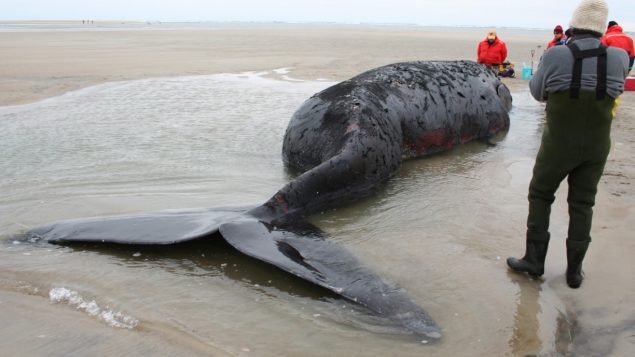
North Atlantic right whale (CALO0901, 3710) with debilitating abnormal curvature of the spine (scoliosis) caused by an entanglement. This injury caused chronic damage to the spine, as seen in the CT scan image, which ultimately led to the young animal’s death. (University of North Carolina Wilmington /Woods Hole Oceanographic Institution/NMFS Permit No. 932-1489)
Of those 43 right whales, nearly 90 per cent died as a direct result of entanglement in fishing gear and vessel collisions, the study found.
“Of all the causes identified, it is critical to emphasize that no adult or juvenile North Atlantic right whale deaths were a result of natural causes. Not one,” Sharp said. “This is clear evidence that these animals are unable to live full, productive lives because they are dying prematurely as the result of human activities.”
In some cases entangled whales drowned almost immediately while in others they endured a slow, painful death, the report said.
Furthermore looking back to 1970, the study showed that despite mitigation efforts, entanglement deaths actually increased from 21 per cent to 51 per cent of reported cases.
Fishing lines wrapping around the whale’s flippers, tail, head, or mouth, caused deep lacerations, and even partial amputations of the flippers, often leading to emaciation resulting from an inability to feed properly.
Vessel collisions also caused fatal trauma in right whales, including skull, jaw and vertebral fractures, severe blood loss, and deep chop wounds into muscle, body cavities, organs, and bone.
An endangered species
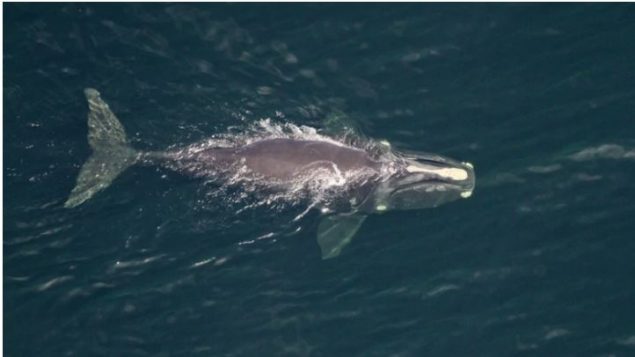
North Atlantic right whale No. 3843 was spotted on July 30, entangled in fishing gear. (Peter Duley/NOAA Fisheries Northeast Fisheries Science Center/CBC)
The North Atlantic right whale once migrated through much of the North Atlantic, but is now found mostly in waters along the coastline between Florida and the Gulf of St. Lawrence in Eastern Canada, one of the busiest maritime shipping corridors.
Only about 411 North Atlantic right whales remain in the world today.
The high number of deaths documented over the past 16 years is not sustainable for this small population, Sharp said.
While commercial whaling for the right whale has been banned since 1935, entanglement and vessel collisions continue to drive the decline of the right whale population.
Targeted and aggressive mitigation measures needed
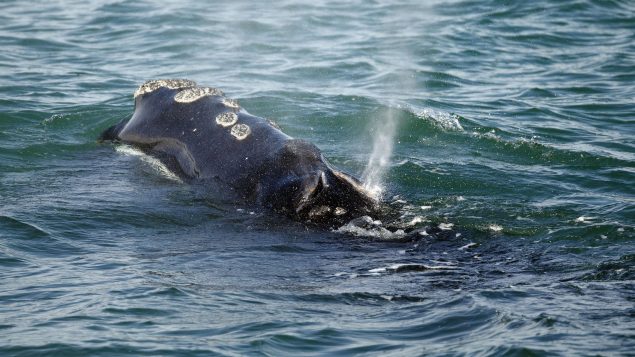
FILE – In this March 28, 2018, file photo, a North Atlantic right whale feeds on the surface of Cape Cod bay off the coast of Plymouth, Mass. (Michael Dwyer/AP Photo/File)
“The good news however, is that these mortalities are preventable if targeted and aggressive mitigation measures are enacted immediately by both the United States and Canada,” Sharp said.
The report makes several recommendations to prevent right whale deaths:
- Employing more effective gear modifications including ropeless fishing in both the US and Canada to minimize the chance of right whales encountering line in the ocean
- Expanding vessel speed restrictions to include larger swaths of North Atlantic right whale habitat
- Implementing dynamic management strategies (such as fisheries closures and mandatory speed restrictions) when right whales are seen in certain areas
- Implementing coordinated gear marking to better monitor where and when whales get entangled and guide mitigation strategies
- Supporting continued and expanded efforts to survey offshore habitats for North Atlantic right whale carcasses to obtain more accurate mortality statistics and necropsy efforts to determine cause of death.
Tonya Wimmer, Canadian investigator of the Marine Animal Response Society in Nova Scotia, said it is critical that organizations continue collaborating to understand exactly what the drivers of such events are in order to avoid future right whale mortalities.
Seasonal speed restrictions
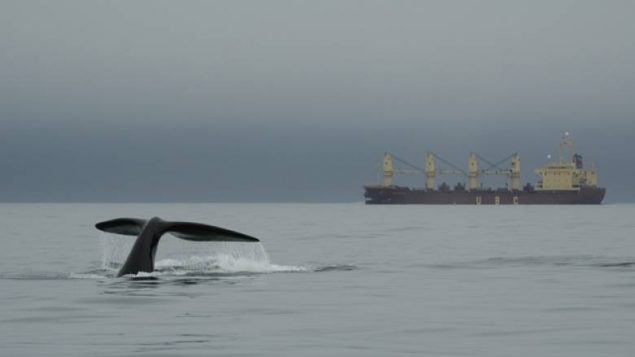
A newly published report recommends expanding vessel speed restrictions to include larger swaths of North Atlantic right whale habitat. (Mahoney Robinson/New England Aquarium)
Simon Rivet, a spokesperson for Transport Canada, said federal government is committed to protection and recovery of Canada’s endangered whales and is taking action.
“Over the past two years, our government has brought forward measures aimed at addressing threats to whales, most notably in our 2016 Oceans Protection Plan and, building on the Oceans Protection Plan, the $167-million Whales Initiative, announced in June 2018,” Rivet said in an email.
The Whales Initiative aims to protect and support the recovery of endangered, iconic whale populations across Canada, he added.
The government also continues to implement seasonal speed restrictions in the Gulf of St. Lawrence, Rivet said.
Ottawa ordered the mandatory speed restriction for vessels 20 metres or more to a maximum of 10 knots in the western Gulf of St. Lawrence in August 2017, following the unprecedented deaths of 12 right whales in the gulf.
The approach for 2019 builds on the measures from the last two years, Rivet said.
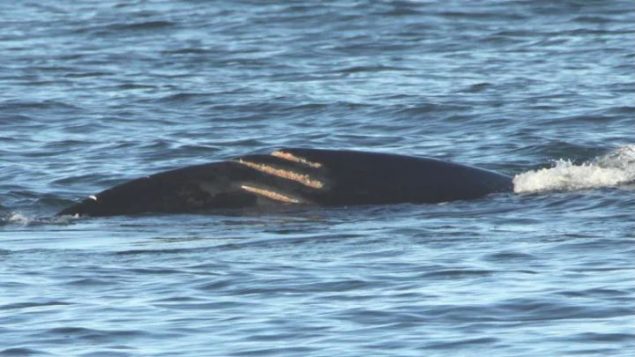
Pictured in 2011, Wolverine, a male endangered north Atlantic right whale, was found dead in the Gulf of St. Lawrence on June 4. Wolverine was so named for a series of three propeller cuts on his tail stock that reminded researchers of the three blades on the hand of the Marvel comic book character of the same name. (Sheila McKenney/Associated Scientists of Woods Hole/Marineland Right Whale Project)
Transport Canada has implemented a mandatory speed restriction from Apr. 28 to Nov. 15 for a large area of the Gulf of St. Lawrence that limits vessels 20 metres or longer to a maximum of 10 knots.
However, in an effort to reduce the economic impact on the marine transportation industry and coastal communities, the federal is once again allowing ships to travel at “safe operational speeds” in parts of two shipping lanes north and south of Anticosti Island when no whales are spotted in the area, Rivet said.
A 15-day mandatory speed restriction of 10 knots will be activated within the appropriate shipping lanes when a North Atlantic right whale is spotted, he added.
“These zones may be adapted as whales migrate in and out of the affected area,” Rivet said. “Transport Canada’s National Aerial Surveillance Program will continue to monitor the shipping lanes with trained personnel to detect right whales.”
In 2018, Transport Canada received 383 reports of potential speed limit infractions out of 4,612 ship transits in the Gulf of St. Lawrence, Rivet said. The government issued four infraction notices accompanied by a penalty of $6,000 each, he said.
Mandatory fishing gear marking

An entangled right whale shown as rescuers shoot a rope cutting arrow (visible at right) in an effort to free it. (Centre for Coastal Studies)
Barre G. Campbell, a spokesperson for the Department of Fisheries and Oceans (DFO), said the federal government supports the IFAW’s call for action.
“We have been working closely with partners in Canada and the United States including NOAA, the New England Aquarium, coastal communities and industry partners to detect right whales and to implement measures that address the top threats facing the whales: ship strikes and gear entanglement,” Campbell said in an emailed statement.
“With confirmed right whale sightings in Canadian waters this season, DFO has already implemented a number of closures for snow crab and lobster fisheries (and all other non-tended fixed gear fisheries) since Apr. 28, 2019 in Atlantic Canada.”
Measures for the 2019 season require gear marking for certain fisheries in an effort to trace lost gear, Campbell said.
“We have been consulting with fish harvesters, and are working toward phasing in sequentially marked buoys and fishery-specific gear-marking, aiming to phase in mandatory gear marking for all fixed-gear fisheries in 2020,” Campbell said.
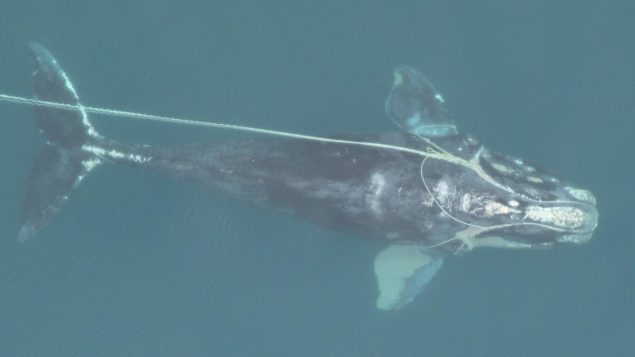






For reasons beyond our control, and for an undetermined period of time, our comment section is now closed. However, our social networks remain open to your contributions.